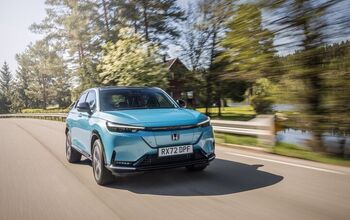Who's Most Prone to Road Rage? Surprising Insights Revealed
Road rage, or aggressive driving, poses a significant threat to road safety worldwide. The National Highway Traffic Safety Administration (NHTSA) defines it as the act of committing several traffic offenses that jeopardize other people or property. Common manifestations of road rage include behaviors such as tailgating, making unsafe lane changes, and disregarding traffic signals. Acknowledging and understanding the scope of this issue is crucial for enhancing road safety.
Disturbing Trends in Driver Behavior
Recent research by the AAA Foundation for Traffic Safety reveals a concerning trend: about 80% of drivers have felt anger, aggression, or road rage in the past month. These emotions manifest in various ways, ranging from aggressive lane changing and rude gestures to excessive speeding. This data underscores the prevalence of road rage and its varied forms.
In-Depth Analysis by Nextbase
Nextbase conducted a study to further explore the incidence of road rage. It found that 59% of drivers have been subjected to such behavior, with tailgating emerging as the most common act. This research highlights the gravity of road rage and its widespread impact on drivers around the globe.
Generational Perspectives on Road Rage
An interesting aspect of the study is the generational differences in road rage incidents. Millennials, aged between 29 and 43, are most frequently involved, followed by Gen X drivers, aged between 44 and 58. Gen Z drivers, aged 16 to 28, also have a notable presence. Conversely, older generations, like Baby Boomers and the Silent Generation, show less propensity for road rage. This suggests that the tendency towards aggressive driving decreases with age.
The Role of Vehicle Type
The study also examines the relationship between the make of vehicles and road rage. Drivers of Ford vehicles are most commonly involved in these incidents. This correlation is further supported by other studies indicating a higher rate of accidents involving Ford vehicles.
Strategies for Road Rage Prevention
In light of road rage's prevalence, knowing how to avoid and handle such situations is key. Effective strategies include maintaining composure, avoiding engagement with aggressive drivers, keeping a safe distance, and documenting incidents when necessary. Dash cams are particularly useful in recording road rage incidents for evidence.
Research Methodology
The global survey by Nextbase was conducted with a comprehensive methodology, involving a diverse group of drivers and utilizing various sources, including dashcam footage. This approach provided a realistic glimpse into the nature of road rage incidents.
This article was co-written using AI and was then heavily edited and optimized by our editorial team.
More by TTAC Staff
Latest Car Reviews
Read moreLatest Product Reviews
Read moreRecent Comments
- Kars so now Ford is losing more money faster - interesting business plan
- Theflyersfan Same almost daily arguments by the usual suspects in 3...2...1...Dave above is right. When they get more affordable and range anxiety proves to be less worrisome, more will sell. There's just a limited number of buyers who can afford $60,000+ cars.And if you have a charger, they make excellent second cars.
- Dave M. I think as the vehicle prices drop, charging infrastructure grows, and distance capacity increases to 350-450 miles, sales will continue to ebb upwards. As a little commuter it completely makes sense if you have access to charging either at home or work.
- SilverCoupe I am generally a fan of Hyundai/Kia styling, but those wheels make it look like one would be driving on octagons that would go clunk, clunk, clunk as one drove.
- Lorenzo Electric motors provide instant torque, that's why locomotives use diesel-electric power plants, for maximum efficiency. Save the natural gas for cooking, and build EV's with locomotive power!


































Comments
Join the conversation